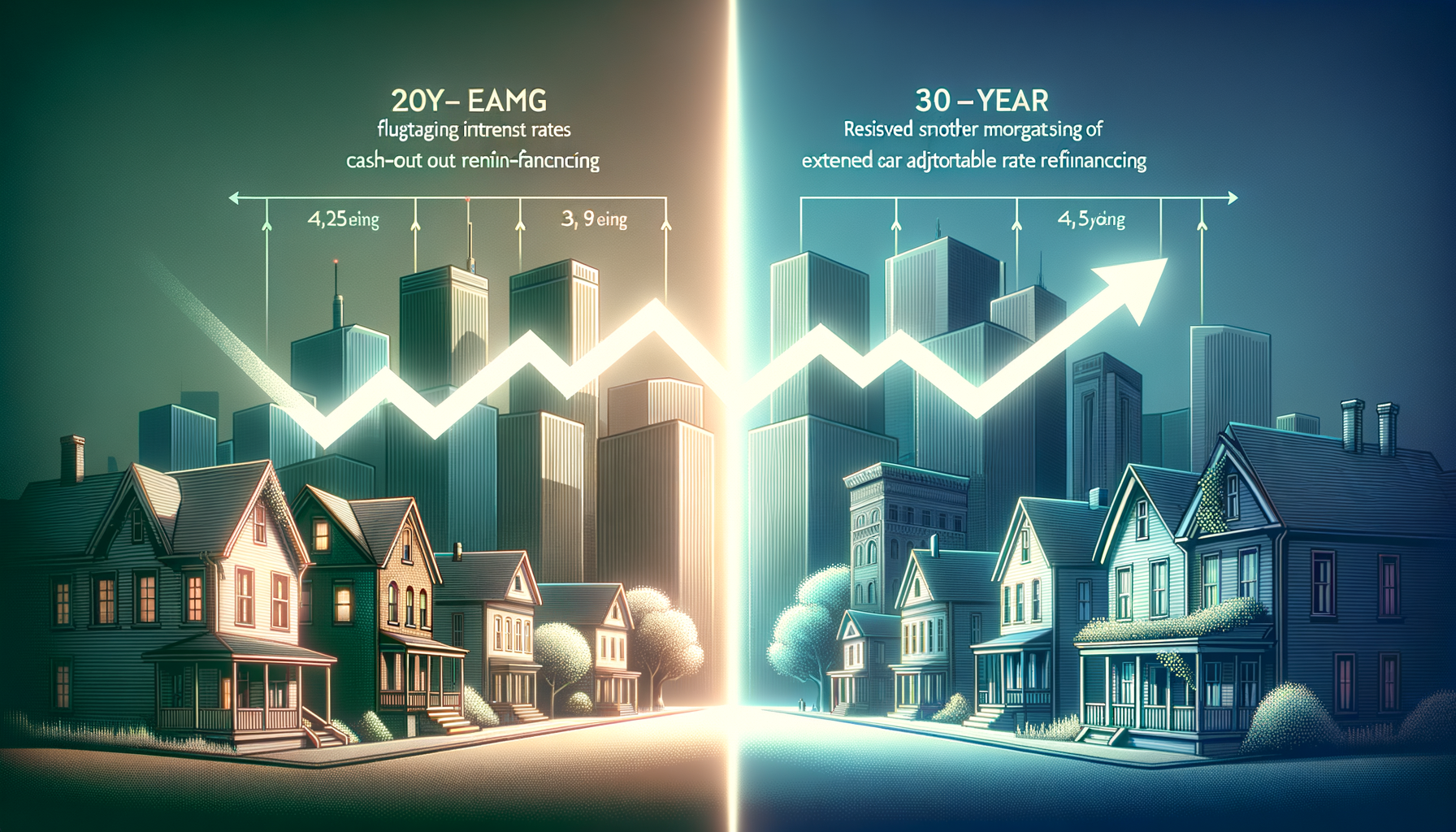“Understanding Fannie Mae’s Clarifications on ARM Interest Rates and Cash-Out Refi Terms for Manufactured Homes”

Adjustable rate mortgages (ARMs) for manufactured homes, also known as mobile homes, are undergoing a significant revision in their terms and conditions as institutions aim to clear certain uncertainties and misconceptions. Among these changes is the decision to extend the timeframe for cash-out refinancing options, an action expected to be immensely advantageous for homeowners.
Indeed, it has long been the norm for stakeholders to adapt to changing economic climates by devising innovative residential policies. These policies aim to cater to the dynamic needs of homeowners, and simultaneously improve the financial security of the institution. An integral part of the housing sector dynamics is the manufactured homes market, which has now become the subject of significant refinancing shifts from key players in the industry.
Adjustable Rate Mortgages 101
Primarily it’s quintessential to comprehend Adjustable Rate Mortgages or ARMs altogether. ARMs are a form of mortgage whereby the interest rate is periodically adjusted based on a variety of factors. These factors are primarily linked to a specific benchmark, such as the U.S. Prime Rate, or the London Interbank Offered Rate (LIBOR). It’s vital to note that ARMs can be influenced by national and global economic conditions, causing them to fluctuate over time.
The appeal of ARMs for many homeowners lies in their initial lower interest rates, compared to fixed-rate mortgages. However, these rates can adjust over time, which can result in higher or lower payments depending on market conditions. Therefore, homeowners must be aware of the potential for change in their monthly expenses.
The importance of ARMs in the housing industry is underscored when considering their role in the financial sustainability of both homeowners and mortgage lenders. By offering a flexible and potentially lower initial interest rate, they enable homeowners to access housing markets that may otherwise be financially inaccessible.
Refinancing and Cash-Out Refinancing
Refinancing, on the other hand, is a financial restructuring process that allows homeowners to replace their existing mortgage with a new one, typically with different terms. The objective of refinancing is to achieve better financial conditions, such as a lower interest rate or a longer repayment term.
Cash-out refinancing, a subtype of the refinancing process, enables homeowners to replace their current mortgage with a larger one. This strategy affords owners the freedom to tap into their home’s equity and access extra cash, which can be used for a variety of purposes such as home renovations or debt consolidation.
Updated Policies for ARMs on Manufactured Homes
Recent advances in policy have unveiled an extension to the maximum terms for cash-out refinance adjustable-rate mortgages on manufactured homes, pushing the envelope from the conventional twenty years term to thirty. This development will undoubtedly impart financial ease to homeowners, offering them more extensive windows to service their mortgages and potentially access larger sums of money when leveraging their homes’ equity.
Furthermore, initial interest rates for ARMs will no longer solely depend on the Freddie Mac Weekly Primary Mortgage Market Survey (PMMS) rate. Instead, they will now also factor in the relevant Treasury index or the London Interbank Offered Rate (LIBOR), with an applicable margin.
These changes give lenders added latitude in terms of the interest rates they offer, bringing potential benefits to homeowners. By seeking reference rates apart from PMMS, the revised approach allows interest rates to better reflect the diversity and dynamism of the wider economy and global market rates.
Having a wider range of interest rate determination aids in creating fairer outcomes for both lenders and borrowers. For instance, if the PMMS is relatively high, lenders can consider alternative reference rates such as the Treasury index or LIBOR, which may provide more average levels aiding borrowers in obtaining more reasonable rates.
Impact on the Manufactured Homes Market
Manufactured homes, typically known as mobile homes, are becoming increasingly popular due to their affordability and flexibility. As a significant portion of the housing sector, their AMRs’ modification will likely have an extensive impact on the brother home-ownership domain.
This move to enhance the financing options for manufactured homes is a welcome one for the real estate industry. It signifies a push towards greater accessibility and affordability in housing. By offering more flexible ARM options and elongated repayment periods, many homeowners will gain wider access to the housing market, get better financial support, and experience increased security.
Furthermore, extending the maximum loan term provides homeowners with the opportunity for lower monthly payments, enhancing their ability to manage their finances effectively. On the flip side, mortgage lenders benefit from increased interest income over a longer loan duration.
Future Considerations
The changes made in adjustable-rate mortgages and cash-out refinancing conditions for manufactured homes demonstrate the industry’s willingness to adapt to the evolving needs of homeowners. While these alterations pose potential advantages, prospective home buyers and current homeowners must keep in mind that external economic factors will continue to influence ARMs.
Conclusively, it is always essential for homeowners to understand the proposed plan’s full terms and conditions, weigh the potential benefits and risks, and consult with financial advisors or mortgage professionals before deciding on an adjustable-rate mortgage or a cash-out refinancing plan. As attractive as these revised terms might appear, charting a clear path to financial stability involves considering multiple factors, such as income stability, market performance indicators, and personal financial goals. After all — the ultimate goal is to make homeownership both achievable and sustainable.
